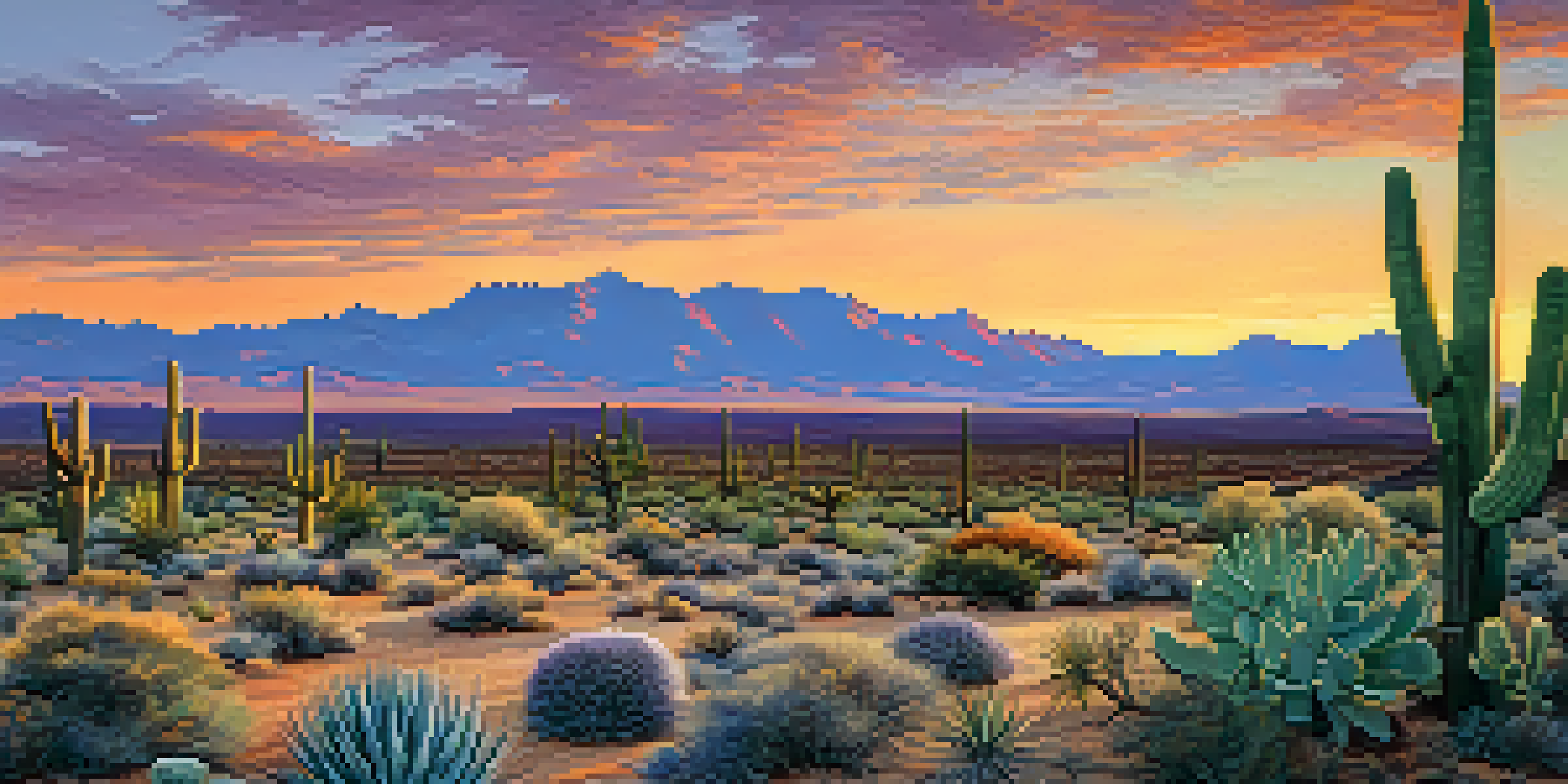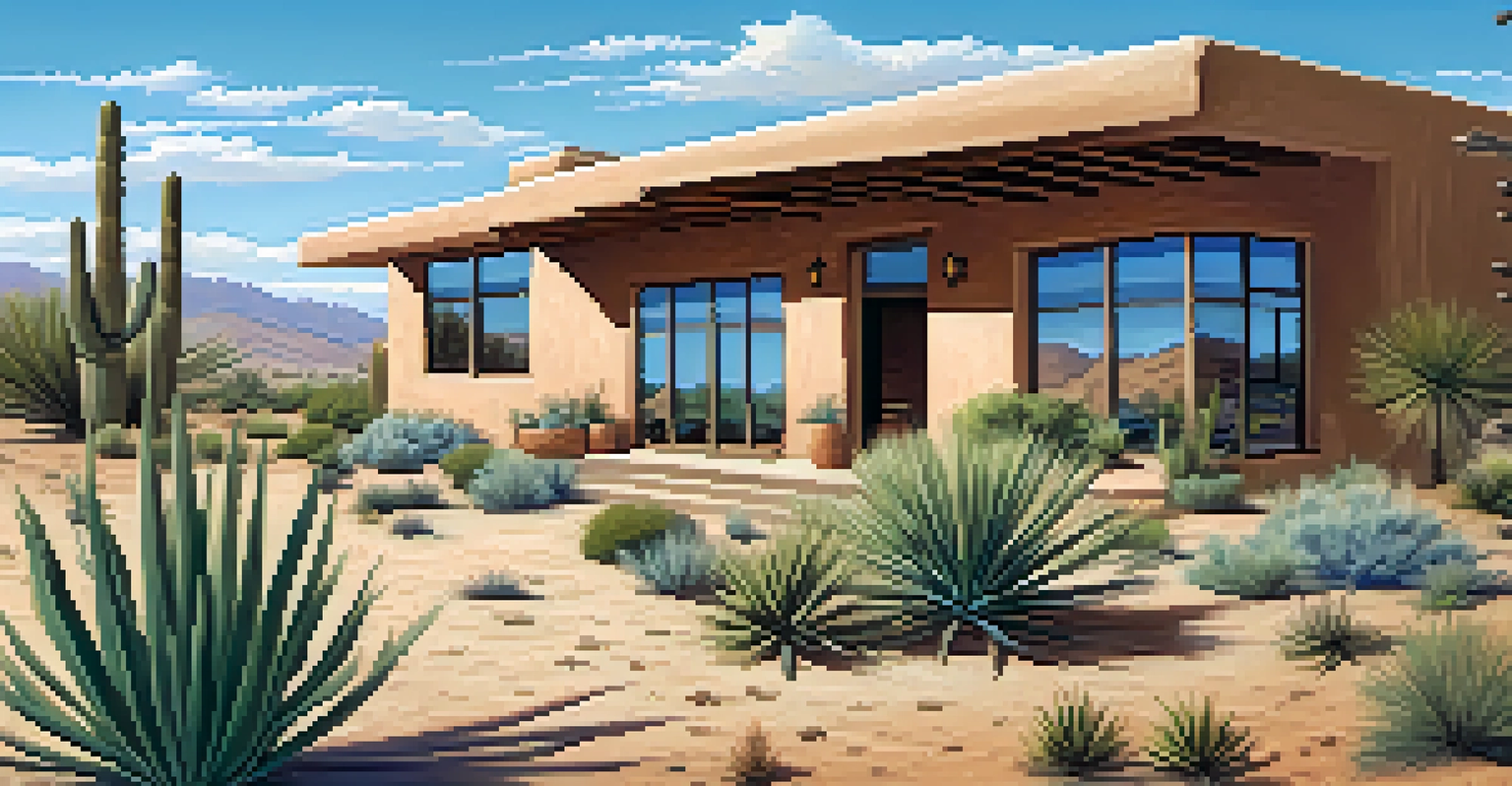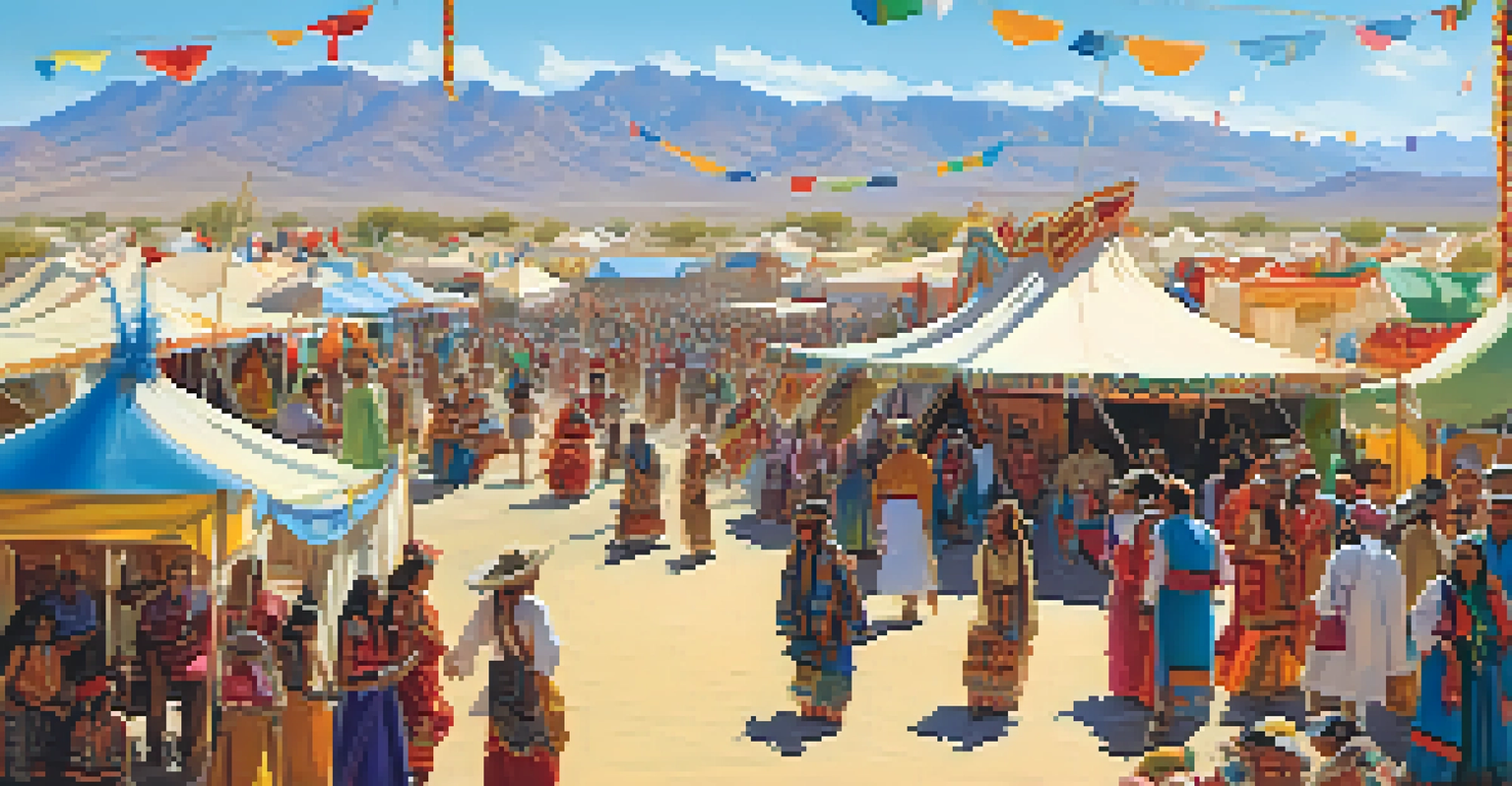Cultural Adaptations to Nevada's Unique Desert Environment

Understanding Nevada's Desert Landscape and Climate
Nevada's desert environment is characterized by its extreme temperatures and arid conditions. With hot summers and chilly winters, residents must adapt their lifestyles to thrive in such a unique climate. The vast landscapes, dotted with sagebrush and rugged mountains, not only influence daily activities but also impact cultural practices.
The desert is a natural extension of our aesthetics, as the desert is a place of simplicity, beauty, and depth.
For example, the concept of time in desert communities often shifts to accommodate the heat, leading to later outdoor activities during the summer months. This adaptation is vital for both safety and comfort, allowing people to enjoy the outdoors while minimizing heat exposure. Understanding these environmental factors is crucial for anyone looking to immerse themselves in Nevada's culture.
Ultimately, the desert’s influence extends beyond just weather; it shapes the very fabric of life here, from social gatherings to traditional celebrations. Recognizing these elements is the first step in appreciating the rich cultural tapestry of Nevada.
Traditional Housing and Architecture in the Desert
The architecture in Nevada reflects the need for insulation against extreme temperatures while utilizing available resources. Traditional homes often incorporate adobe, a building material made from clay and straw, which provides excellent thermal mass. This means that during the day, homes stay cool, while at night, they retain heat, a perfect balance for desert living.

Many modern homes have adopted these traditional techniques, integrating features like wide overhangs and large windows to maximize airflow and natural light. This not only keeps homes comfortable but also enhances the aesthetic appeal of the landscape. You’ll find that these design choices resonate with the spirit of sustainability, respecting the environment while providing necessary shelter.
Adapting to Desert Climate
Residents of Nevada have developed unique lifestyle adaptations to thrive in the extreme temperatures and arid conditions of the desert.
In addition, buildings often include outdoor spaces like courtyards, which serve as gathering spots for family and friends. These communal areas reflect the importance of social interaction in a harsh environment, showcasing how architecture can foster community ties even in the vastness of the desert.
Water Conservation Practices in Desert Living
Living in a desert means that water is a precious resource, leading to innovative conservation practices among residents. Many households have embraced xeriscaping, a landscaping method that reduces or eliminates the need for irrigation by using drought-resistant plants. This not only conserves water but also enhances the natural beauty of the environment.
In every walk with nature one receives far more than he seeks.
Rainwater harvesting systems have also gained popularity, allowing residents to collect and store rainwater for later use. These systems exemplify how communities are becoming more self-sufficient and environmentally conscious. By utilizing available resources wisely, Nevadans demonstrate resilience and adaptability in the face of scarcity.
Moreover, education on water conservation has become a priority, with community programs teaching sustainable practices. This collective effort reflects a deep-seated respect for the desert environment, ensuring that future generations can continue to thrive in Nevada’s unique landscape.
Cultural Festivals Reflecting Desert Heritage
Cultural festivals in Nevada celebrate the rich heritage of its desert landscape, highlighting traditions that have evolved over generations. Events like the Burning Man festival are not only artistic expressions but also showcase the community's ability to adapt to and thrive in challenging environments. These gatherings foster creativity and collaboration, drawing people from around the world.
Local fairs celebrate indigenous cultures, featuring traditional crafts, music, and dance that pay homage to the land's history. This connection to the past is crucial in preserving the cultural identity of the region, reminding participants of their roots and the significance of the desert environment. It’s a vibrant display of how culture can flourish in harmony with nature.
Sustainable Water Practices
Innovative water conservation methods, such as xeriscaping and rainwater harvesting, showcase how Nevadans respect and utilize their scarce resources.
Through these festivals, communities also address contemporary issues, such as sustainability and environmental stewardship. By intertwining tradition with modern challenges, Nevada's cultural events serve as a platform for dialogue and innovation, reinforcing the importance of adaptability in a rapidly changing world.
Cuisine Influenced by the Desert Environment
The culinary landscape of Nevada showcases how the desert environment influences local cuisine. Traditional dishes often incorporate ingredients that thrive in arid conditions, such as prickly pear, mesquite, and wild game. This reliance on local produce not only supports sustainable practices but also celebrates the unique flavors of the region.
Community potlucks and farmers' markets play a significant role in sharing these culinary traditions, where families gather to exchange recipes and stories. This communal approach fosters a sense of belonging and reinforces cultural ties, reminding everyone of the shared experience of living in the desert. It’s a delicious way to connect with the land and each other.
Moreover, contemporary chefs are beginning to experiment with these traditional ingredients, creating innovative dishes that reflect Nevada's diverse culture. By blending old and new, they highlight the adaptability of local cuisine, proving that the desert can inspire creativity and culinary excellence.
Transportation Adaptations in the Desert Landscape
Navigating the vast expanses of Nevada's desert requires unique transportation solutions to accommodate the challenging terrain. Many residents rely on off-road vehicles or trucks equipped for rugged landscapes, ensuring they can traverse the diverse environments safely. This adaptation reflects not just a practical need but also a sense of adventure inherent in desert living.
Public transportation systems have evolved to meet the needs of the community, with routes designed to connect remote areas to urban centers. This accessibility is crucial for fostering economic growth and ensuring that all residents can participate in community life. It showcases how adaptation extends beyond individual choices to collective solutions.
Cultural Festivals and Resilience
Cultural festivals in Nevada celebrate local heritage while addressing contemporary issues, fostering community resilience and creativity.
Additionally, biking and walking paths are becoming more common, encouraging sustainable transportation options. These initiatives promote health and well-being while also reducing the environmental impact, demonstrating a growing awareness of the need to balance modern conveniences with respect for the desert landscape.
Community Resilience in the Face of Desert Challenges
Living in a desert environment presents numerous challenges, but it's the resilience of Nevada's communities that truly shines. People have learned to adapt to droughts, extreme temperatures, and other environmental stresses through collaboration and resourcefulness. This spirit of togetherness fosters a sense of security and belonging, crucial for thriving in such a harsh landscape.
Local organizations often play a pivotal role in community resilience, providing support systems during difficult times. From food banks to emergency services, these networks ensure that no one is left behind, reinforcing the idea that together, communities can overcome obstacles. This strength is deeply woven into the cultural fabric of Nevada.

Furthermore, education and awareness programs equip residents with knowledge on sustainability and environmental stewardship. By empowering individuals to take action, communities are not just surviving; they're thriving, showcasing a blend of tradition and innovation in the face of adversity.